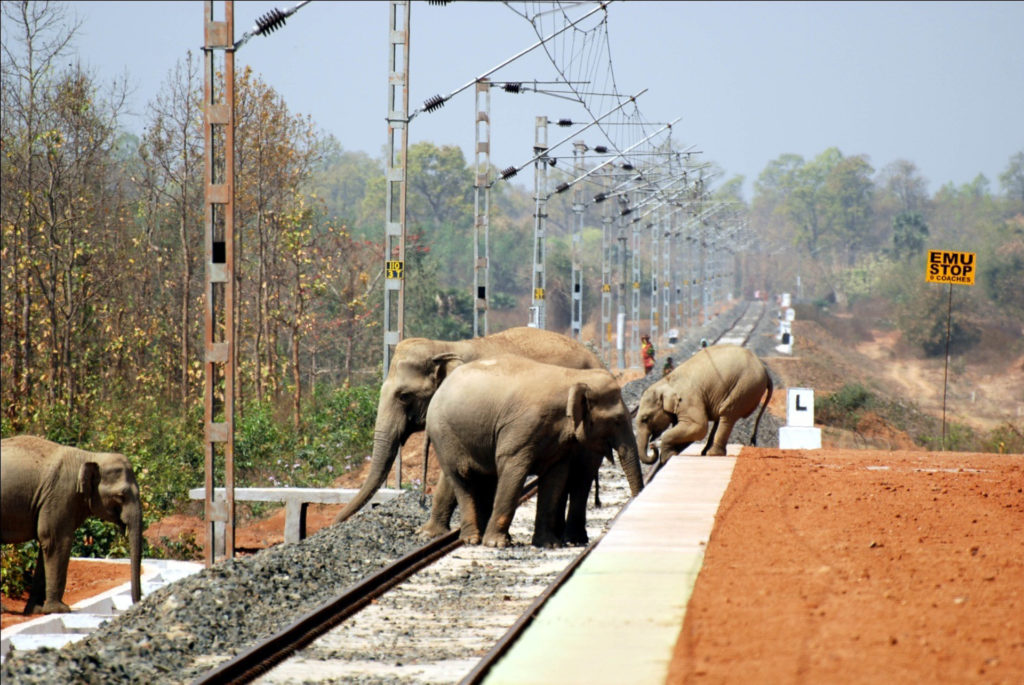NEWS RELEASE
MONTREAL, DEC. 15, 2022 – Asia is experiencing the highest infrastructure investment rates globally, led by transportation and energy sector expansion. Yet much of this planned infrastructure will bisect some of the world’s most biodiverse areas and affect access to vital natural resources that people depend upon for their livelihoods, such as forest products and clean water.
The U.S. Agency for International Development (USAID) announced today that it is funding a four-year project to increase implementation of effective natural resource safeguards for linear infrastructure — which includes roads, railroads, power lines, fences, and canals — to support people and nature and conserve Asia’s extraordinary biodiversity. Michael Schiffer, USAID’s assistant administrator of the Bureau for Asia, introduced the Asia’s Linear Infrastructure safeGuarding Nature (ALIGN) Project at the United Nations Convention on Biological Diversity, 15th Conference of the Parties (COP15) in Montreal.
“Governments from around the world are gathered here to act on their commitment to stem biodiversity loss,” said Mary Melnyk, environmental security and resilience division chief for USAID’s Asia Bureau. “We are confident that the ALIGN Project will contribute significantly to that effort by exploring new ways people can coexist with wildlife in healthy ecosystems, even in regions of rapid development and high economic growth.”
The ALIGN Project aims to enhance the capacity of countries to avoid or address the adverse impacts of linear infrastructure development throughout Asia, which is home to many endangered species such as Bengal tigers and Asian elephants.
The project will be implemented by WWF, the global conservation organization, in partnership with the Center for Large Landscape Conservation (CLLC), a nonprofit with expertise in reducing the impacts of linear infrastructure on biodiversity. ALIGN will support efforts in three focal countries — India, Mongolia and Nepal — and share lessons learned, guidance and training materials on best practices throughout Asia.
“Poorly planned infrastructure can impede wildlife movement by fragmenting natural habitats, blocking migration routes, and causing mortality from vehicle strikes and electrocution,” said Rob Ament, senior conservationist at CLLC and linear infrastructure ecology technical director for the ALIGN Project. “It can also change the way land is used, such as facilitating the expansion of logging, human settlement or other development, which can further shrink habitat areas. This is why strong safeguards are such a vital part of sustainable linear infrastructure development.”
Effective natural resource safeguards for linear infrastructure might involve, for example, an alternate route for a power line expansion to avoid critical habitat or crossing structures to provide safe passage for wildlife over or under highways or railways.
“Natural areas strengthen local economies, increase communities’ resilience to climate change, and supply resources important for livelihoods,” said Sandesh Singh Hamal of WWF-Nepal, who serves as chief of party for the ALIGN Project. “Careful planning will help countries in Asia avoid or minimize the kinds of negative impacts to wildlife and complex ecosystems that can accompany economic growth.”
The project team is working to enhance the capacity of key stakeholders to update and formulate policies and best practices for the application of safeguards; improve the collection and public availability of biodiversity data for use in infrastructure planning and development; produce guidance and training materials; and conduct research into linear infrastructure sustainability to inform better safeguards.
“These outcomes contribute to resilience to shocks, including pandemics, climate change or other natural disasters, and greater conservation of biodiversity,” Melnyk said. “Improved safeguards will also protect ecosystems that store carbon in the face of climate change. In many ways, a healthy ecosystem provides more climate resilience for its inhabitants.”
Along with governments in the focal countries, the project team will also work with national and international financial institutions; consulting firms and construction companies; academic institutions; and networks, coalitions and platforms active in the focal countries and across the region. These collaborative activities will help deepen and expand the reach of the project in promoting safeguards and wildlife-friendly infrastructure development policies and practices that support both natural resources and livelihoods throughout Asia.
###
Please send media requests to press@usaid.gov.
For more information:
About the Center for Large Landscape Conservation
The Center for Large Landscape Conservation is the hub of a growing global movement to reverse fragmentation of the earth’s large landscapes and restore nature’s resilience to climate change. The Center works to connect natural areas, provide critical wildlife habitat and safe migration for wide-ranging animals, and protect ecological processes and systems. They accomplish this by developing science, crafting policy, and sharing expertise with partners, practitioners, and local communities around the world. Largelandscapes.org
About U.S. Agency for International Development
The U.S. Agency for International Development (USAID) is the world’s premier international development agency and a catalytic actor driving development results. USAID’s work advances U.S. national security and economic prosperity, demonstrates American generosity, and promotes a path to recipient self-reliance and resilience. USAID.gov
About WWF
WWF is an independent conservation organization, with over 30 million followers and a global network active in nearly 100 countries. Our mission is to stop the degradation of the planet’s natural environment and to build a future in which people live in harmony with nature, by conserving the world’s biological diversity, ensuring that the use of renewable natural resources is sustainable, and promoting the reduction of pollution and wasteful consumption. Visit panda.org/news for the latest news and media resources; follow us on Twitter @WWF_media.
Photo: Asian elephants on newly constructed railway platform in Tamil Nadu – WWF India



